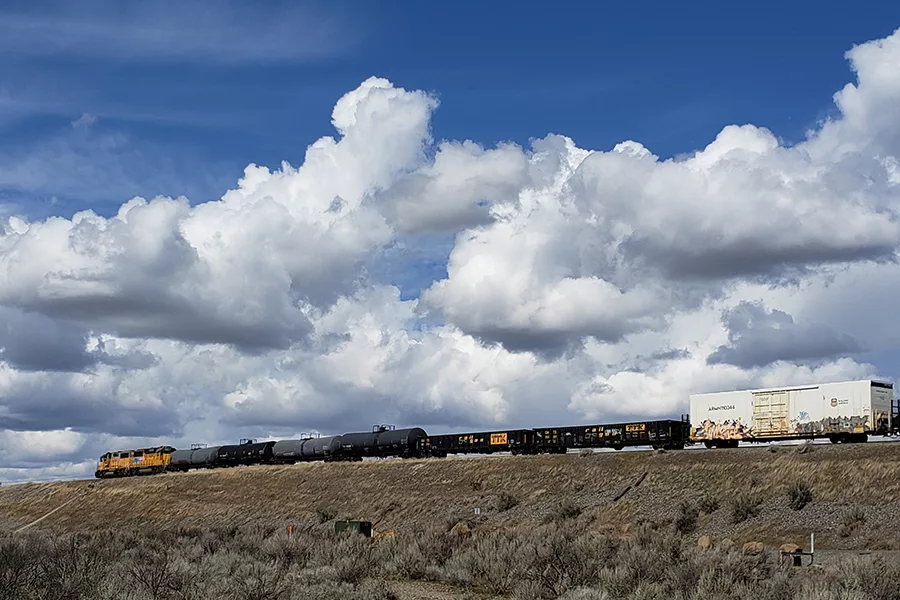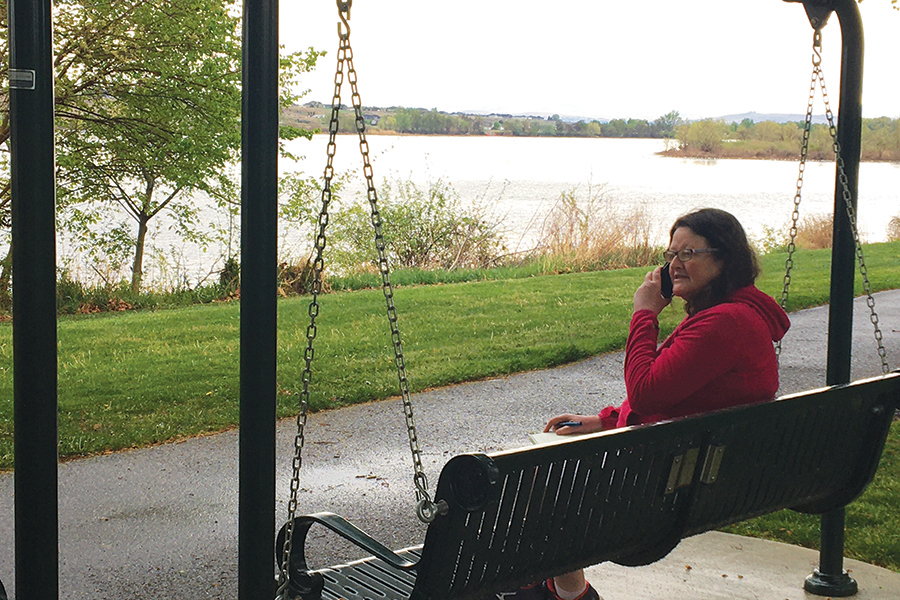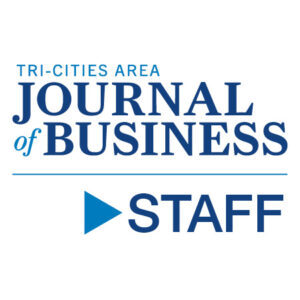
Home » Walkabouts restore calm in crazy world, lead to new discoveries
Walkabouts restore calm in crazy world, lead to new discoveries

May 15, 2020
By Wendy Culverwell & Kristina Lord
The week of May 18 marks our ninth week working from our home offices for the Tri-Cities Area Journal of Business. It also marks more than 45 days of walks.
Our daily WFH (working from home) routine includes a walk around the Tri-Cities—paved paths, sandy trails, bike routes, river edges and alley ways, through mud, rain, wind and a change of seasons.
We started these walks to stay connected while our team had to be physically disconnected. It also was a way to maintain normalcy, when the world felt like it was teetering out of control in the early days of the pandemic.
Before the pandemic, lapping the neighborhood near our offices off Grandridge Boulevard was a typical part of our daily lunch-hour schedule to get our bodies moving, to talk through stories and ideas, to recharge.
When we started our WFH meetups on March 16, the weather was a chilly 54 degrees. We frequently shrugged on heavy jackets and gloves—but not masks. Not then.
Children ordered home from school and day care accompanied us in the beginning, though they were cautioned repeatedly to steer clear of others, to mind the six-foot rule. They enjoyed getting out into the world with us, too.
By March 30, we were too scared to bring them along. That’s also when we rigged up masks from old T-shirts, following a YouTube how-to video featured in a Washington Post story. Three days later we looped two hair ties over our ears to hold in place colorful folded bandannas and cloth napkins.
By the following week, we were wearing more comfortable and safer face masks. The publisher found her box of hospital face masks decorated with Hello Kitty left over from chemotherapy treatments, and the editor’s brother discovered an open package of N95 masks in his shop that he sent her. It took another week or so before we saw anyone else in the Tri-Cities wearing them regularly.
In early March when we started, most of our walking conversations centered around coronavirus and wrapping our heads around what it meant, how it would affect us.
We talked about our very real fears for our aging parents, our families, ourselves.
These walk-and-talks also included a lot of conversations about stories for the Journal (we even found a couple along the way), challenges and successes of working from home, the latest news about coronavirus, what stores were stocking toilet paper, when we’d see our stimulus checks.
But the coolest and most unexpected part has been discovering places we’ve never explored on foot.
There’s scarcely a walkable park in the Tri-Cities we haven’t trekked.
https://vimeo.com/419104258
We’ve meandered around the perimeter of the Hanford Reach museum, musing about the vacant land to the southeast and how it could be developed someday, the imposing architecture of the building and why a sidewalk ended in the middle of nowhere. We explored the abandoned and overgrown KOA campground in Columbia Park, noting the old barbecue grills standing sentry in tall weeds, the chill disc golfers we passed and an unexpected bridge over a rushing stream.
As we strolled past the huge houses along the Pasco side of the Columbia River, we wondered who lived in them. When we got back to our respective offices, we looked them up on the Franklin County Assessor’s website. Pasco has its very own Millionaires’ Row, home to farmers, developers and more.
We also discovered a hidden private drive featuring three huge homes that could have been along Millionaires’ Row and several undeveloped parcels owned by prominent Tri-City families tucked near Highland Grange Park behind the Kennewick branch of Mid-Columbia Libraries.
We loved exploring Richland’s Urban Greenbelt Trail. We envisioned a slog along city sidewalks.
Instead it is a delightful trek along secret trails, wetlands, pocket parks and bridges. The path took us through a busy construction site, along the Columbia River and back by Kadlec Regional Medical Center and its helipad. Along the way, we stopped for photos behind the Richland Players Theatre, posing in front of the angelic wings painted there.
We visited Chamna Natural Preserve. For a river delta park, the Yakima River was surprisingly elusive. But we returned, drawn by the natural setting so in contrast to our suburban neighborhoods.
From Chamna, we walked north out of the parking lot, under Interstate 182 and along the Bypass Highway to check out the Duportail Bridge construction site.
A flash of color in the roadside trash caught our attention. It was our very own—and painstakingly prepared—Hanford special edition, discarded along with the April issue of the Tri-Cities Area Journal of Business. We noted the name on the mailing label!

We met up at various points along Richland’s Leslie Groves Park. In the shadow of the city’s Water Treatment Plant on Saint Street, Pete Rogalsky, Richland’s public works director, chose that moment to call to field questions about the project to replace its blue and yellow façade. (Click here to read story.) We watched dozens of fuzzy yellow goslings trailing their aloof parents at the water’s edge.
We’ve met at the USS Triton Sail Park near the Port of Benton and walked through fancy condos with furtive construction workers beavering away in garages. On a lovely spring day, we had the trail and river vistas mostly to ourselves.
Kennewick’s Zintel Canyon Trail caught our attention. It was the first week of irrigation season and the Seventh Street trailhead was swamped with water overflowing the channel. Ducks paddled across drowned grass. It’s a sweet hike but our shoes got muddy and a sneaky branch smacked an unsuspecting head. Yogi, our trusty trail dog companion, wasn’t keen on crossing the unsteady footbridges—and neither were we.
Pasco beckoned. Osprey Pointe, home to the Port of Pasco, features a parklike campus on the area’s only low-bank waterfront. We studied the port’s quiet barge terminal and imagined transforming a lonely office building perched on piers into the Tri-Cities Area Journal of Business World Headquarters. We’d take care of the trees sprouting from the docks. We’d also enjoy taking care of business while enjoying the spectacular Columbia River views.
We strolled by Zen Noh Hay and wondered at the vast amount of hay stacked in east Pasco. We brazenly walked past the gate barring cars from Sacajawea State Park, emboldened by the bicyclist we saw do the same thing.
We found him a few minutes later, relaxing at a picnic table near the confluence of the Snake and Columbia rivers, not far from where Lewis and Clark spent a night. We learned he was a retired pharmacist who regularly cycles from Horn Rapids in Richland to the park—close to 50 miles in all, a route he completes about three times a week.
We got lost in W.E. Johnson Park off Van Giesen Street in Richland. Standing water covered part of the loop trail and we had to retrace our steps to pick up the path after trying unsuccessfully to find a way around it using our phones and sense of direction, neither successfully. Don’t worry, we made it back before deadline.
While our WFH walks proved good for our souls and work focus, they also were a remarkable and surprising reminder about the many undiscovered and beautiful areas in the Tri-Cities that can’t be seen or experienced from behind a windshield, even for a pair of journalists who have covered the community for decades and thought they’d seen it all.
Find your own path
Hike Tri-Cities
Wendy Culverwell is the editor and Kristina Lord is the publisher at the Tri-Cities Area Journal of Business.
Local News
KEYWORDS may 2019





